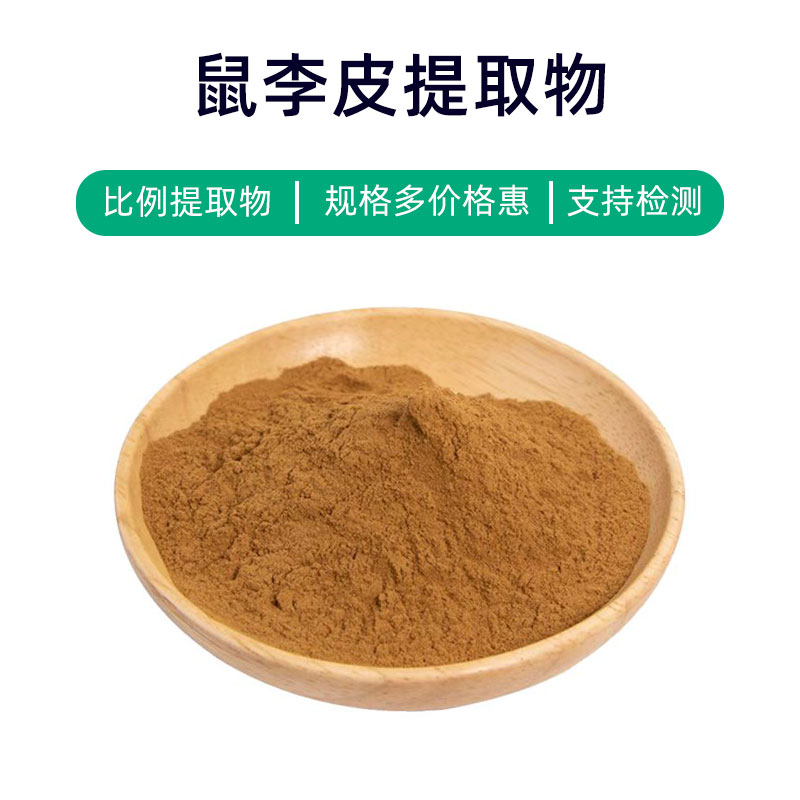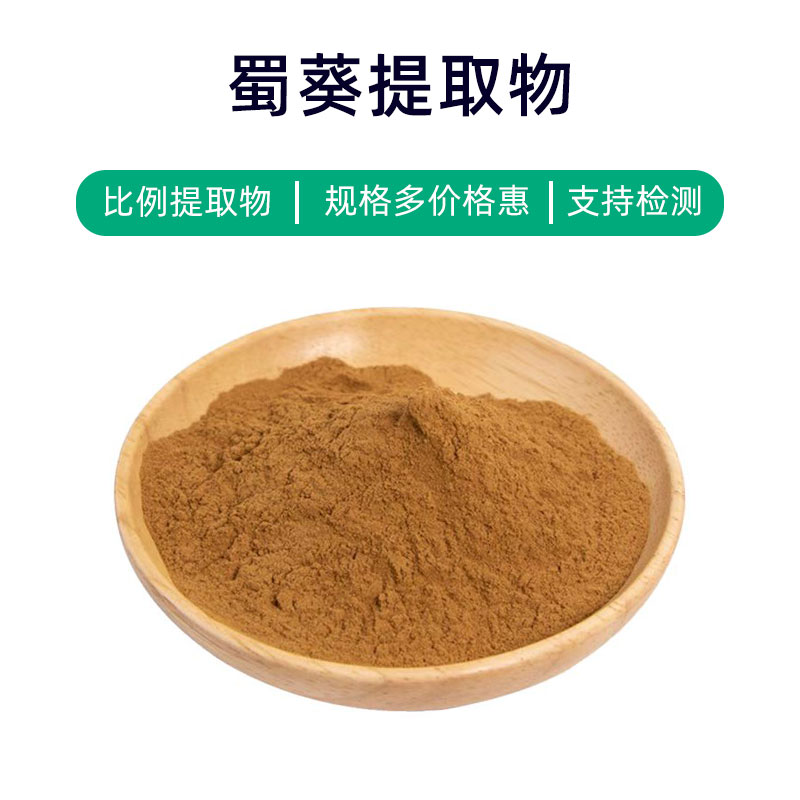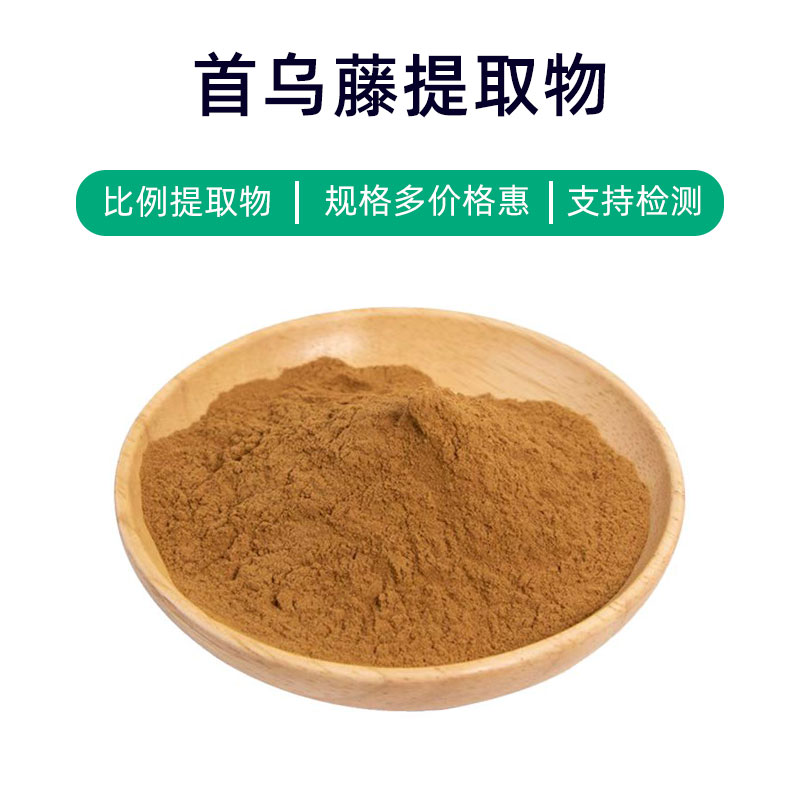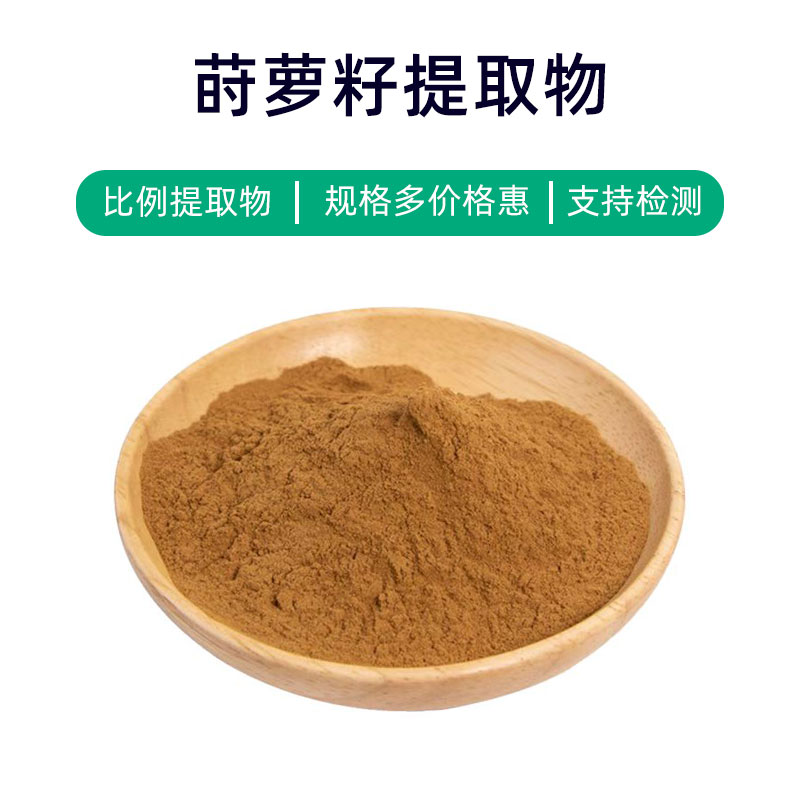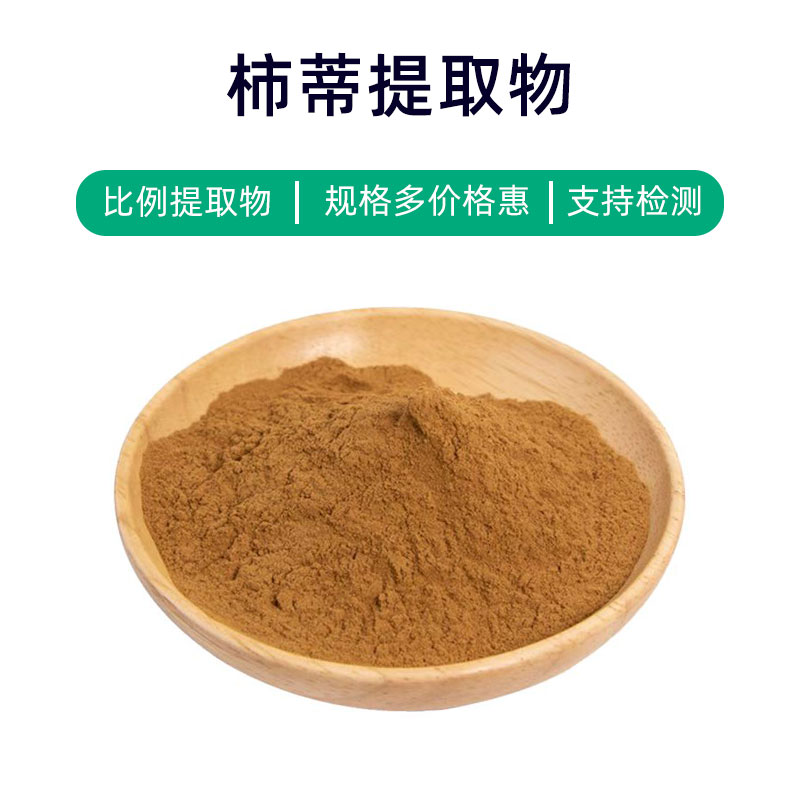Peony Bark Extract Product Introduction
Peony Bark Extract is a natural plant extract obtained from the bark of the peony (Paeonia lactiflora). Its main components include flavonoids (such as paeoniflorin and danshenone), polysaccharides, and essential oils, which contribute to its various effects and applications.
Firstly, Peony Bark Extract has anti-inflammatory and antioxidant properties, helping to reduce skin inflammation, inhibit free radical generation, and slow down the aging process of the skin. Secondly, it possesses antibacterial effects, suppressing the growth of bacteria and fungi, which aids in improving skin conditions and preventing infections.
In the cosmetics field, Peony Bark Extract is commonly used as an ingredient in skincare products such as creams, lotions, and serums. It helps balance skin moisture and oil, enhances skin elasticity, lightens fine lines and dark spots, resulting in smoother, more youthful skin.
Moreover, Peony Bark Extract is also widely applied in medicine. It is formulated into oral health supplements or medications to regulate immune functions, improve blood circulation, and alleviate inflammatory symptoms, showing effectiveness in the adjunctive treatment of chronic diseases.
In summary, Peony Bark Extract is a versatile natural plant extract with multiple effects and applications, making it a valued ingredient in the fields of medicine and cosmetics.
Peony Bark Extract Production Process
The production process of Peony Bark Extract typically includes the following steps:
- Raw Material Collection and Preparation: Fresh peony bark is selected as the raw material, usually harvested during the plant's growth period to ensure freshness and quality. The collected bark is then cleaned and pre-treated to remove impurities and contaminants.
- Extraction Process: After preliminary treatment, a solvent extraction method is used. Common extraction solvents include ethanol and ether. The cleaned bark is placed in an extraction device with an appropriate amount of solvent to soak and extract. The extraction time and temperature can be adjusted based on process requirements, and multiple extractions are generally performed to enhance yield.
- Filtration and Concentration: Once the extraction is completed, the extract is filtered to remove solid residues and impurities. The filtered liquid is then concentrated by evaporating the solvent through methods such as evaporation or reduced pressure concentration to yield a concentrated extract.
- Refinement and Separation: The concentrated extract may contain various components, requiring further refinement and separation. Techniques such as column chromatography and crystallization are used to isolate the target components, obtaining pure Peony Bark Extract.
- Drying and Milling: Finally, the resulting extract is dried to eliminate residual moisture, enhancing stability and shelf life. The dried extract can then be milled into a powder form.
- Quality Control and Packaging: Throughout the production process, quality control measures are implemented to ensure the product meets standards and requirements. After passing quality inspections, the product is packaged, typically in plastic bags or aluminum foil pouches, to protect against light, heat, and moisture.
Peony Bark Extract Effects and Side Effects
Peony Bark Extract is a plant extract with several effects and functions, primarily including:
- Antioxidant Effects: Rich in natural antioxidants, such as flavonoids and polyphenols, it effectively scavenges free radicals, protecting cells from oxidative damage and delaying cellular aging.
- Anti-Inflammatory Effects: Studies indicate that Peony Bark Extract possesses anti-inflammatory properties, inhibiting inflammatory responses and alleviating symptoms of inflammation-related diseases like arthritis and dermatitis.
- Skin Protection: It contains vitamins, amino acids, and minerals, which can nourish the skin, enhance the skin barrier function, maintain moisture balance, and reduce problems like dryness and roughness.
- Inhibition of Dark Spot Formation: Active components in Peony Bark Extract suppress melanin production, helping to decrease pigmentation and create a more even and radiant complexion.
- Promotion of Blood Circulation: Some studies suggest it helps dilate blood vessels and enhance circulation, aiding in improving microcirculation and alleviating issues like cold extremities and fatigue.
- Improvement of Cardiovascular Health: With a high concentration of flavonoids, it regulates blood lipids and lowers cholesterol, contributing to better cardiovascular health and prevention of heart diseases.
- Antibacterial Effects: Some research demonstrates that Peony Bark Extract has antibacterial properties, inhibiting bacterial and fungal growth, helping to prevent skin infections.
It is important to note that while Peony Bark Extract has various benefits, caution should be exercised during use. Some individuals may experience allergic reactions to its components, so a skin sensitivity test is recommended prior to use, and professional advice should be followed. Additionally, long-term use in high doses may lead to adverse reactions, such as skin allergies or digestive issues, hence consultation with a healthcare provider is advisable.
Peony Bark Extract Usage Scenarios and Dosage
Peony Bark Extract has a wide range of applications in medicine, food, and cosmetics. Its main usage scenarios and dosages are as follows:
- Medical Applications:
- Skin Care: Commonly used in various skincare products, such as creams, lotions, and masks, to improve skin texture and reduce wrinkles and dark spots.
- Anti-Inflammatory Treatment: With its anti-inflammatory effects, it can be used to treat skin inflammation and conditions like eczema.
- Microcirculation Improvement: Can be included as an ingredient to enhance microcirculation and alleviate symptoms like cold hands and feet and fatigue.
- Food Applications:
- Nutritional Supplements: Rich in antioxidants, it can serve as a natural antioxidant in health supplements, promoting anti-aging and enhancing immunity.
- Flavoring Agent: Its unique flavor can be incorporated into seasonings to enhance the taste of food.
- Cosmetic Applications:
- Skincare Products: Often found in facial creams and serums, providing moisturizing, antioxidant, and whitening effects.
- Makeup Products: Added to lipsticks and eyeshadows, it increases moisture retention and shine for a long-lasting, natural look.
Dosage:
- Medical Products: As per a doctor's recommendation, a suitable amount of Peony Bark Extract can be made into ointments or added to drug formulations for external use, typically 1-2 times daily.
- Food Additive: Added in compliance with food safety standards, generally 0.1-1 gram per kilogram of food.
- Cosmetics: Added based on product formulations, generally a recommended amount of 1-5% of the total formula.
It is crucial to follow product instructions or medical advice to avoid excessive use and potential adverse effects. For individuals with sensitive skin, it is advisable to perform a skin test first; if any discomfort or allergic symptoms occur, discontinue use and consult a healthcare professional.
Peony Bark Extract Source Plant Introduction, Distribution, and Growth Environment
Peony Bark Extract is derived from the bark of the peony (scientific name: Paeonia suffruticosa Andrews). Peony is a perennial deciduous shrub or small tree belonging to the Ranunculaceae family. Here is a detailed introduction to the source plant, its distribution, and growth environment:
Source Plant: The peony (scientific name: Paeonia suffruticosa Andrews), also known as "Flower King" or "National Treasure," is a species within the peony genus. It typically grows as a shrub or small tree up to 2-3 meters tall, with gray-brown bark that has cracks. The leaves are alternate, compound, with 3-7 leaflets that are oval to elongated, and flowers are solitary at the branch tips with many large, colorful petals.
Distribution: Native to China, the peony is one of the country’s traditional, valued ornamental flowers, especially renowned in Luoyang. Beyond China, it is also found in Japan, Korea, Myanmar, and other regions. In China, peonies are widely distributed across the northeast, north, central, and southwestern areas.
Growth Environment: Peonies prefer a warm, humid climate and require ample sunlight, thriving in well-drained soil. Although they are not too picky about soil types, they grow best in fertile, loose, well-drained soil and are highly adaptable to different pH levels, preferring neutral to slightly acidic soil. They typically grow in hilly areas, valleys, riverbanks, and parks, showing good cold resistance; they thrive even in colder regions but are less tolerant of heat and drought.
Overall, the peony is a beautiful and hardy plant with a long cultivation history and deep cultural significance in China. It is often used as an ornamental garden plant and is an important medicinal plant in traditional Chinese medicine and modern pharmaceutical formulations, with its bark and other parts rich in medicinally valuable components, widely used in traditional medicine and health products.
Peony Bark Extract Processing and Storage
The processing of Peony Bark Extract typically involves the following steps: First, fresh peony bark is collected and washed, with impurities and dirt removed; then, the cleaned bark is dried in the sun or using a dryer to reduce moisture content; next, effective extraction methods such as aqueous extraction or alcohol extraction are employed to extract active components from the dried bark; finally, through steps like filtering, concentrating, and drying, the finished Peony Bark Extract is produced.
In terms of storage, Peony Bark Extract should be kept in a cool, dry, and ventilated environment, away from direct sunlight and humidity. It can be stored in sealed containers to prevent exposure to air, light, and moisture, thereby extending its shelf life and maintaining the stability of its active components. Under proper storage conditions, Peony Bark Extract generally maintains good quality and stability.
Monica Sun is a seasoned expert in the plant extraction industry with over a decade of experience in research and production. She specializes in the extraction and purification of plant active ingredients, focusing on driving innovation in natural product applications. Monica has participated in the development of multiple functional plant extracts, delivering high-value natural raw material solutions for the health food, pharmaceutical, and dietary supplement sectors.









